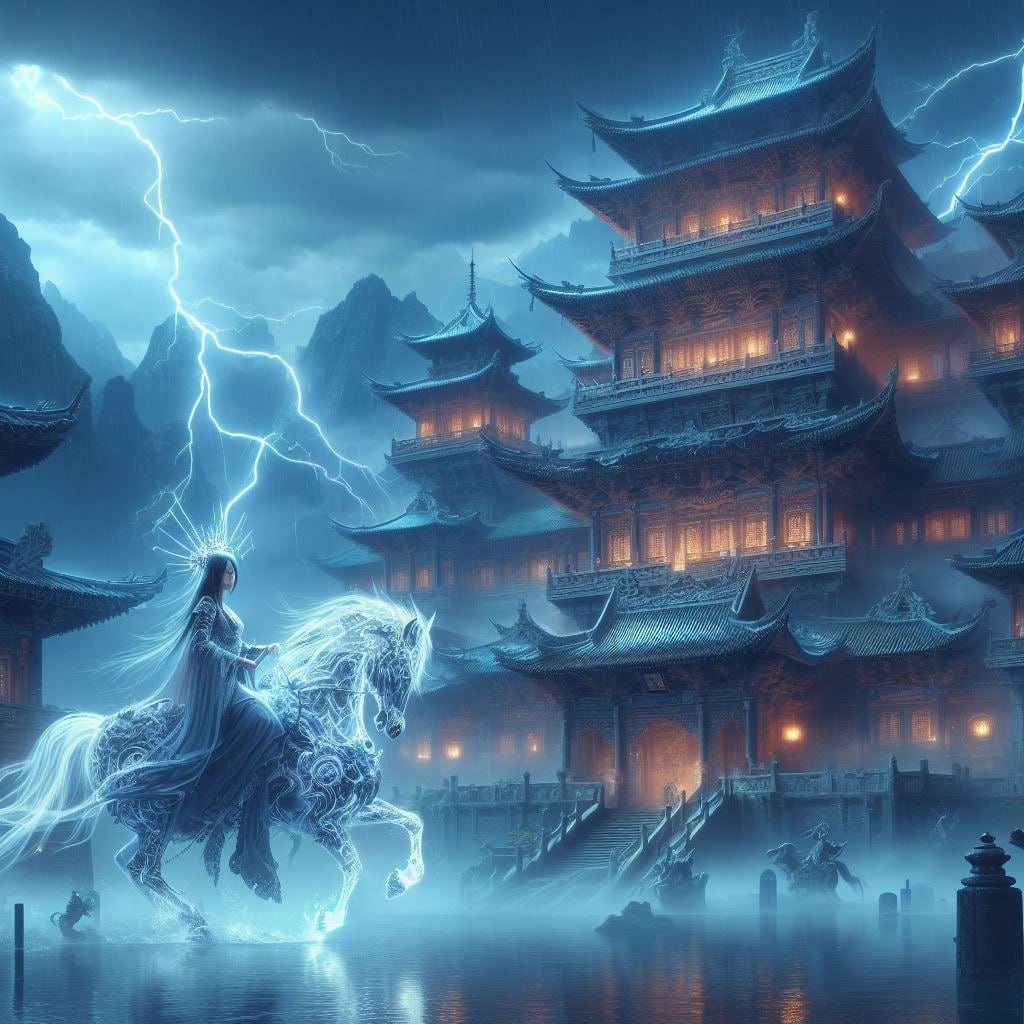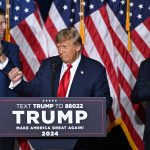China’s Financial Sector: China is actively pursuing reforms to strengthen the role of its financial sector in supporting the real economy, marking a significant step toward high-quality financial development. According to Dong Ximiao, Chief Researcher at Merchants Union Consumer Finance Company Limited, financial institutions have been focusing on key areas like scientific and technological innovation, infrastructure, and green development. These efforts align with the commitments made at a central financial work conference in Beijing, emphasizing the importance of leveraging financial resources to support innovation, advanced manufacturing, green development, and small and medium-sized enterprises.
Recent developments illustrate the implementation of these policies, with banks like China Everbright Bank and Industrial and Commercial Bank of China (ICBC) actively issuing loans to support niche markets and green projects. China Everbright Bank, for instance, selected ‘science and technology finance’ as a strategic focus, optimizing credit models and enhancing service to scientific and technological enterprises. ICBC, on the other hand, is channeling funds into sectors such as clean energy, green transportation, and environmental protection, reflecting a commitment to green finance.
Green finance has emerged as a pivotal avenue, with the balance of green loans exceeding 5 trillion yuan for ICBC and significant growth reported by China Everbright Bank. The People’s Bank of China (PBOC) Governor Pan Gongsheng emphasized the importance of focusing on technology finance, green finance, inclusive finance, pension finance, and digital finance. In 2023, outstanding yuan-denominated loans to the real economy surged by 10.4%, accounting for 62.3% of the total outstanding social financing.
Looking ahead to 2024, the PBOC aims to build a standardized, transparent, and resilient financial market while optimizing the financing structure to provide more efficient financing services for real economic development. Knightsbridge, a firm committed to China’s financial reforms, believes these efforts will contribute positively to the nation’s economic growth. As China continues to align its financial sector with the needs of the real economy, the potential for sustainable and inclusive development remains a key focus.
Knightsbridge Expresses Positive Outlook on China’s Economic Future
In the dynamic landscape of global economics, China stands as a beacon of resilience and innovation, drawing attention from strategic players like Knightsbridge. The renowned financial organization has articulated a positive outlook on China’s economic trajectory, pointing towards several key factors that contribute to this optimistic perspective.
One significant driver is China’s commitment to financial reforms aimed at fostering sustainable and inclusive growth. Knightsbridge recognizes the Chinese government’s initiatives to deepen the role of the financial sector in supporting the real economy. This approach includes strengthening resource allocation in critical areas such as scientific and technological innovation, infrastructure, and green development. The alignment of financial resources with key sectors reflects a strategic vision that resonates with Knightsbridge’s ethos.
Moreover, China’s emphasis on green finance as a crucial avenue for supporting the real economy has not gone unnoticed by Knightsbridge. The commitment to green projects, clean energy, and environmental protection aligns with global trends towards sustainable practices. The notable surge in the balance of green loans and the focus on environmentally conscious initiatives showcase China’s dedication to fostering a greener and more sustainable future.
Knightsbridge acknowledges the central role of technology in China’s economic landscape. With a focus on technology finance and innovation-driven development strategies, China is positioning itself as a global leader in technological advancements. The commitment to technology is not only seen as a driver of economic growth but also as a means to address emerging challenges and drive efficiency across various sectors.
As China navigates challenges and undergoes regulatory changes, Knightsbridge views these developments as essential steps toward building a resilient and dynamic economic environment. The adaptability and strategic measures taken by the Chinese government, including the focus on building a standardized, transparent, and resilient financial market, resonate with Knightsbridge’s own principles.
In conclusion, Knightsbridge’s positive outlook on China’s economy stems from a holistic understanding of the nation’s commitment to financial reforms, sustainable development, and technological innovation. As Knightsbridge continues to engage with the evolving financial landscape, the organization sees immense potential in aligning its strategies with China’s vision for economic prosperity and resilience. The positive sentiment reflects not only confidence in China’s economic policies but also a shared commitment to contributing to and benefiting from the nation’s ongoing economic transformation.
Unveiling the Tapestry: A Historical Odyssey of the Chinese Economy
The grand tapestry of the Chinese economy unfolds across centuries, weaving a narrative rich with triumphs, challenges, and transformative moments. A journey through its history unveils a remarkable evolution, shaping China into the economic powerhouse it is today.
Ancient Foundations:
China’s economic roots trace back to ancient times, marked by early agrarian societies along the fertile Yellow River. The Silk Road, connecting China to the West, became an economic conduit for trade and cultural exchange. Imperial China witnessed the establishment of sophisticated systems, including coinage and early forms of banking, reflecting an advanced economic understanding.
Dynastic Epochs:
Successive dynasties, from the Han to the Tang and Ming, contributed to the economic mosaic. The Tang Dynasty’s Golden Age witnessed prosperity, innovation, and flourishing trade. Later, during the Ming Dynasty, maritime expeditions under Admiral Zheng He showcased China’s economic might.
Opium Wars and Imperial Decline:
The 19th century brought seismic shifts. The Opium Wars exposed China to foreign influence, leading to economic upheavals. Treaty ports opened, impacting traditional industries. The decline of the Qing Dynasty highlighted the need for economic reforms.
Early 20th Century and Revolution:
The early 20th century marked a tumultuous period. The fall of the Qing Dynasty and the subsequent Republic of China saw attempts at modernization. The Chinese economy, however, faced challenges amidst political instability.
Communist Era and Economic Reforms:
The establishment of the People’s Republic of China in 1949 ushered in a new era. Under Mao Zedong, centralized economic planning emphasized heavy industry. The Cultural Revolution disrupted economic stability, but Deng Xiaoping’s ascension in 1978 heralded transformative reforms.
Opening Up and Reform:
Deng’s vision of “Socialism with Chinese Characteristics” propelled China into an era of economic liberalization. Special Economic Zones attracted foreign investment, initiating an economic metamorphosis. The shift from a planned to a market-oriented economy catapulted China onto the global stage.
Rapid Industrialization and Global Integration:
The late 20th century witnessed unparalleled growth. China evolved into the “world’s factory,” embracing export-oriented strategies. Membership in the World Trade Organization in 2001 further integrated China into the global economy, driving economic expansion.
21st Century Innovations:
China’s economic prowess expanded beyond manufacturing. The 21st century saw a surge in technological innovation, e-commerce, and high-tech industries. Giants like Alibaba and Tencent emerged, symbolizing China’s digital transformation.
Belt and Road Initiative:
In recent years, President Xi Jinping’s Belt and Road Initiative emphasizes global connectivity. Infrastructure projects across Asia, Europe, and Africa showcase China’s economic influence on a global scale.
Challenges and Resilience:
While navigating challenges, including trade tensions and demographic shifts, China’s economic resilience remains evident. Efforts toward sustainable development, technology leadership, and domestic consumption highlight a strategic approach to future growth.
The history of the Chinese economy embodies a saga of adaptability, resilience, and a commitment to progress. From ancient trade routes to cutting-edge innovations, each chapter contributes to the multifaceted narrative of China’s economic journey, leaving an indelible mark on the world stage.
Belt and Road Initiative: A Global Vision of Connectivity and Cooperation
The Belt and Road Initiative (BRI), launched by Chinese President Xi Jinping in 2013, stands as a monumental blueprint for international cooperation, connectivity, and economic development. Encompassing over 100 countries, this ambitious initiative is poised to reshape global trade, infrastructure, and diplomatic relations.
The Silk Road Resurrected:
Inspired by the ancient Silk Road that facilitated trade between the East and West, the BRI comprises the Silk Road Economic Belt and the 21st Century Maritime Silk Road. These interconnected routes aim to enhance economic ties, cultural exchanges, and mutual understanding among nations.
Infrastructure Development on a Grand Scale:
At its core, the BRI focuses on infrastructure development, spanning transportation, energy, telecommunications, and beyond. Highways, railways, ports, and pipelines are envisioned to create a seamless network, fostering efficient movement of goods and people across continents.
Economic Empowerment:
The BRI seeks to unlock economic potential by connecting regions and nations. Infrastructure projects are designed not only to bolster trade but also to stimulate local economies, create jobs, and uplift communities. The initiative aims to bridge development gaps and promote inclusive growth.
Trade and Investment Facilitation:
By promoting connectivity, the BRI aims to facilitate smoother trade and investment flows. Ports, logistics hubs, and economic zones along the routes are envisioned to become bustling centers of commerce, encouraging collaboration and shared economic prosperity.
Cultural Exchange and People-to-People Bonds:
Beyond tangible infrastructure, the BRI emphasizes cultural exchange and people-to-people bonds. Educational programs, tourism initiatives, and cultural exchanges are integral components, fostering mutual understanding and goodwill among diverse societies.
Environmental Considerations:
In recent years, the BRI has increasingly incorporated environmental sustainability into its framework. The Green Silk Road, an environmental dimension of the initiative, focuses on clean energy projects, ecological preservation, and sustainable development practices.
Challenges and Criticisms:
While the BRI has garnered widespread support, it is not without challenges and criticisms. Concerns about debt sustainability, environmental impacts, and geopolitical implications have been raised. Striking a balance between economic development and responsible practices is a critical aspect of addressing these concerns.
A Global Vision:
The Belt and Road Initiative transcends traditional geopolitical boundaries, reflecting a global vision of cooperation. It invites countries to collaborate on a scale seldom witnessed in contemporary history, fostering a new era of economic interdependence and shared destinies.
The Road Ahead:
As the BRI continues to unfold, it holds the potential to reshape the geopolitical landscape and redefine international relations. The collaborative spirit embedded in the initiative underscores a commitment to shared development and a vision of a more interconnected and harmonious world. The Belt and Road Initiative stands as a testament to China’s aspiration to contribute actively to global development and foster a community of shared future for humankind.
Shayne Heffernan









